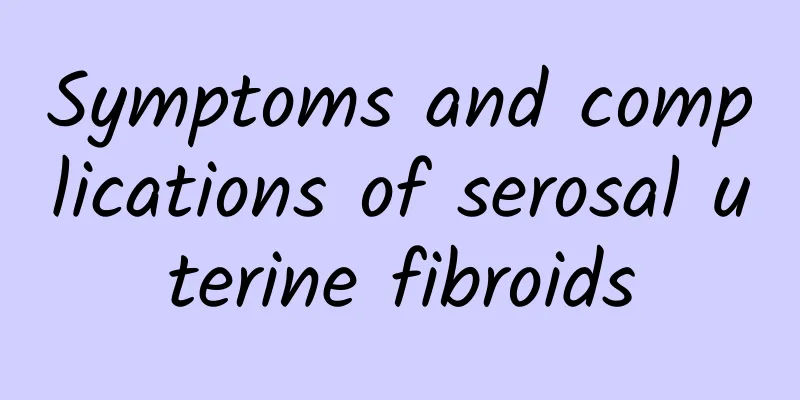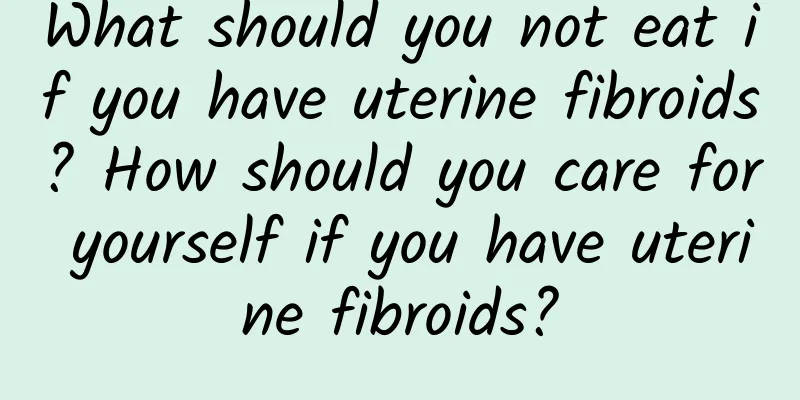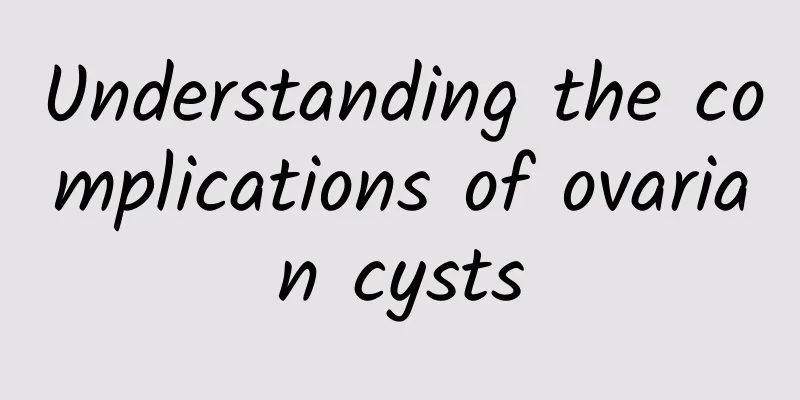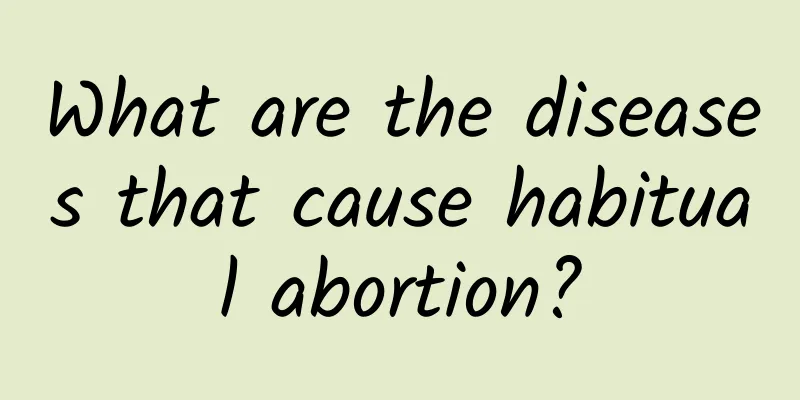Symptoms and complications of serosal uterine fibroids

|
The symptoms of subserosal uterine fibroids are what we need to grasp. Only by correctly grasping the symptoms of subserosal uterine fibroids can we help everyone get an accurate diagnosis and treatment. So, what are the symptoms of subserosal uterine fibroids? Subserosal uterine fibroids refer to most of the fibroids that grow and protrude from the surface of the uterine serosa, accounting for about 20-130% of fibroids. Subserosal uterine fibroids refer to most of the fibroids that grow and protrude from the surface of the uterine serosa. Between subserosal uterine fibroids and the muscle wall, small fibroids have little effect on women's menstrual changes and are difficult to detect. Some subserosal uterine fibroids do not have obvious symptoms until they grow larger, so it is difficult for many people to discover their disease. Myomas grow toward the uterine serosa and protrude from the surface of the uterus, accounting for about 20%. The surface of myomas is only covered by the uterine serosa. When the tumor continues to grow toward the serosa, only one pedicle is connected to the uterine muscle wall, becoming a pedunculated subserosal myoma, which is nourished by the blood vessels of the pedicle. Due to insufficient blood supply, it is easy to degenerate and necrotize. If the pedicle is twisted and broken, the myoma will fall off into the abdominal cavity or pelvic cavity, forming a free myoma. Subserous fibroids and small fibroids between the muscle wall often have no obvious menstrual changes. There is acute abdominal pain when the pedicle is torsion. When the fibroid turns red, the abdominal pain is severe and accompanied by fever. Lower abdominal swelling and back pain are common, and menstruation is aggravated. It can be touched that the hard and spherical mass is connected to the thin pedicle of the uterus and moves. Subserosal uterine fibroids and intramural fibroids usually do not have obvious menstrual changes. Acute abdominal pain occurs when the pedicle is twisted. When the subserosal uterine fibroids turn red, the abdominal pain is severe and accompanied by fever. Subserosal uterine fibroids are common in lower abdominal swelling and back pain, and menstruation is aggravated. This is usually difficult for patients to detect by themselves and is usually discovered accidentally during gynecological examinations. For the above-mentioned symptoms of subserosal uterine fibroids, we must actively grasp and correctly grasp the symptoms of subserosal uterine fibroids to help you get accurate diagnosis and active treatment to maximize the restoration of everyone's health. |
<<: What are the symptoms of uterine fibroids? How to prevent and treat uterine fibroids?
Recommend
The main cause of vulvar leukoplakia
Among many gynecological diseases, vulvar leukopl...
You can still enjoy good food even if you reduce sugar intake! In addition to pan-frying salmon, learn 4 French and Japanese cooking methods at once
Salmon is low in sugar and rich in astaxanthin, w...
What causes Bartholinitis
How does Bartholinitis develop? This disease is m...
Is it normal to have bleeding on the second day after taking mifepristone tablets? What should I do if I have bleeding on the second day?
Although most people will experience vaginal blee...
What should I pay attention to during miscarriage?
What should I pay attention to during miscarriage...
What happens if there are a lot of red blood clots during menstruation?
What happens if there are a lot of red blood clot...
Uterine fibroids 6 cm, no symptoms, do I need surgery?
If the uterine fibroid is 6 cm and there are no s...
How to prevent pelvic peritonitis
We should pay attention to the changes in the vul...
Will eating donkey-hide gelatin affect uterine fibroids? Dietary reference for women with uterine fibroids
As social pressure gradually increases, the incid...
Are there any secret recipes to refresh your mind? Doctor: Using the wrong method can harm your health
In order to improve "work efficiency", ...
What to do if your menstrual cycle is disrupted?
What to do if your menstrual cycle is disrupted? ...
Causes of incomplete uterine aspiration during abortion
Artificial abortion, also known as artificial abo...
What causes blood clots during menstruation?
If a woman has more blood clots during her menstr...
What methods can be used to treat maternal uterine effusion?
Uterine effusion is a relatively common gynecolog...
What is the success rate of preserving pregnancy for threatened abortion?
Some female friends experience symptoms of threat...









